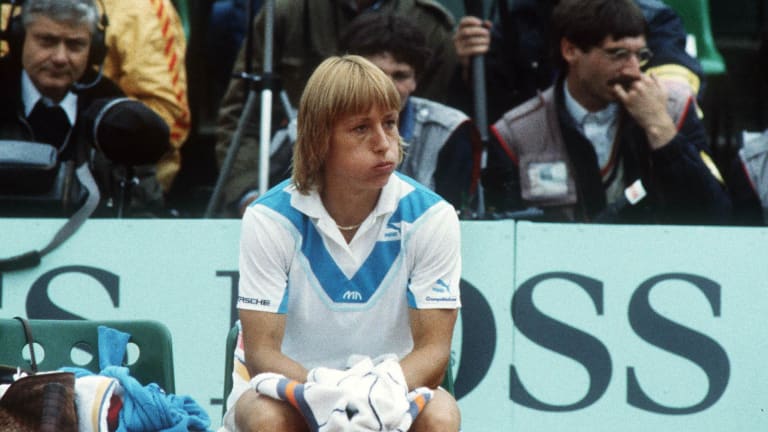Roland Garros
TBT, 1983 French Open: Horvath hands Navratilova only loss of season
By May 28, 2020Roland Garros
Rafael Nadal to be honored with 'exceptional' tribute on opening day of Roland Garros
By Apr 17, 2025Roland Garros
French Open organizers introduce draw to access ticket sales
By Jan 07, 2025Roland Garros
Coaches Corner: Juan Carlos Ferrero proves essential to Carlos Alcaraz's Roland Garros success
By Jun 14, 2024Roland Garros
What’s next for Novak and Nadal? Four ATP storylines after the Paris fortnight
By Jun 10, 2024Roland Garros
Naomi’s resurgence, Iga on grass: Four WTA storylines after the Paris fortnight
By Jun 10, 2024Roland Garros
Carlos Alcaraz becomes the clay-court champion that he—and we—always knew was possible
By Jun 09, 2024Roland Garros
Coco Gauff wins first Grand Slam doubles title with Katerina Siniakova in dream team debut
By Jun 09, 2024Roland Garros
Coco Gauff is a Grand Slam champion in singles and doubles, exceeding her own expectations
By Jun 09, 2024Roland Garros
From Rafa to Iga: as one owner of Roland Garros departs, a new one has moved in
By Jun 08, 2024TBT, 1983 French Open: Horvath hands Navratilova only loss of season
To steal the title of a book where much took place in Paris, call Horvath-Navratilova a tale of two tactics—for the underdog, the best of times; for the favorite, the worst of times.
Published May 28, 2020
Advertising

TBT, 1983 French Open: Horvath hands Navratilova only loss of season
© AFP via Getty Images
Advertising

TBT, 1983 French Open: Horvath hands Navratilova only loss of season